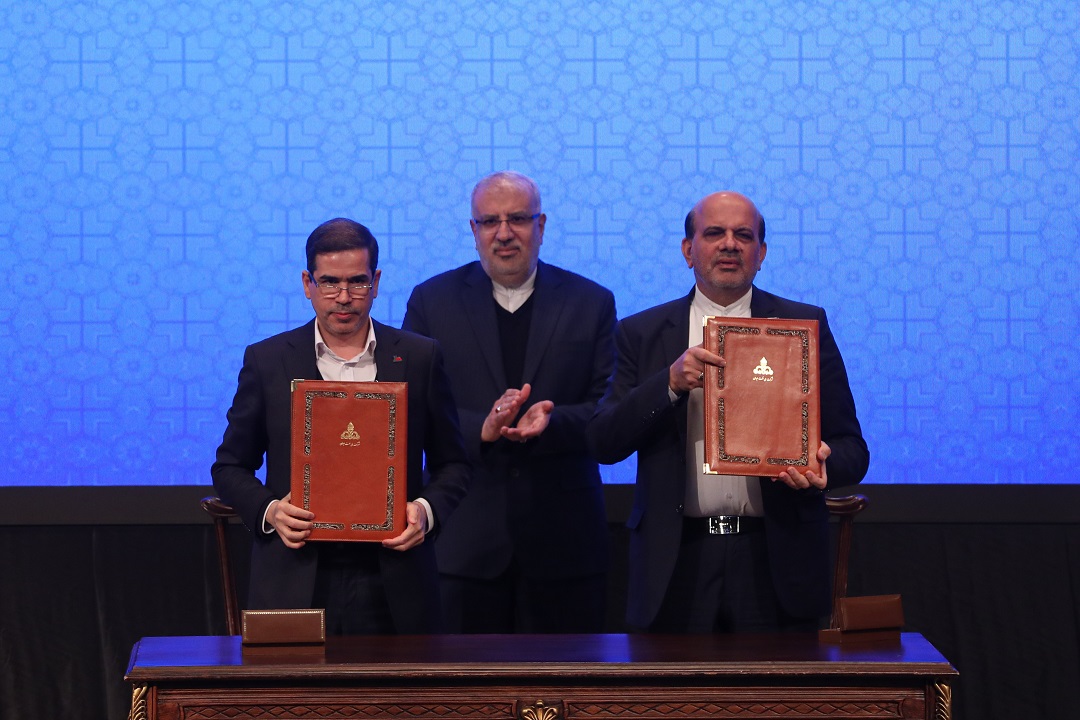Iran’s Oil Ministry signed major contracts with domestic contractors, including MPNA Group, to boost pressure in the South Pars gas field, which the country jointly shares with Qatar.
On March 10, 2024, the Iranian Ministry of Oil signed significant contracts with domestic firms, including MAPNA Group, Petropars, Oil Industries’ Engineering and Construction (OIEC Group), and Khatam al-Anbiya Construction Headquarters, for a project aimed at bolstering pressure within the South Pars gas field.
The agreements entail a total investment of $20 billion for the pressure-boosting project, which anticipates a 90 trillion cubic feet increase in gas extraction and a 2 billion barrel rise in condensate recovery from the field. This is expected to generate $900 billion in revenue for the nation.
The project is positioned as a strategic and paramount undertaking for the Iranian oil industry.
Project set to safeguard Iran’s energy security
Addressing the signing ceremony, MAPNA Group President Mohammad Owliya described the project as an “important step in safeguarding the country’s energy security.”
Highlighting the extensive experience and thorough engineering studies that have paved the way for the project’s implementation, he noted that various plans for onshore and offshore sectors can be implemented as they depend on final studies and resource availability.
Equipped with a comprehensive supply chain encompassing equipment construction, implementation, operational support, and necessary logistical arrangements, MAPNA Group is “fully prepared to undertake this project efficiently and on schedule,” he added.
Owliya acknowledged the collective expertise and resources of other contractors in the project, noting MAPNA Group’s capability in supplying essential industrial equipment such as turbocompressors.
Highlighting the imperative of adhering to project timelines, he emphasized the potential repercussions on the country’s energy security in case of delays. He assured that contractors are committed to ensuring uninterrupted gas and electricity supply.
In the technical overview of the project implementation, he said that the “most important and best” method is to establish off-shore gas boosting platforms. These platforms are equipped with essential gas pressure boosting equipment, residential modules, communication infrastructure, and pipelines for transporting sweet gas from onshore facilities, he added.
Drawing from the experience in constructing a 7,000-ton platform in Phase I of South Pars, Owliya expressed confidence in the feasibility of building the pressure-boosting platform. Mitigating gas pressure drops along the pipeline, boosting production, and obviating the need for specialized technologies are the advantages of the plan proposed by MAPNA Group, he said.
Reliance on domestic expertise
Iranian Oil Minister Javad Owji also addressed the ceremony, pointing to the record-breaking gas extraction figures from the South Pars field, revealing a daily yield of 707 million cubic meters this year.
Touching upon the significance of the project of pressure boosting, he said that 93% of the fuel supply for Iran’s power plants, gas industries, and a substantial portion of petrochemicals depend on it.
Owji underscored the reliance on domestic expertise, citing the successful operation of phase 11 of South Pars and the ongoing operation of 38 platforms in the field.
The gas boosting project will start in the next three to four years, Owji added.
He said that the project would create a 20-billion-dollar capacity for operations by Iranian companies. “With an anticipated extraction increase of 90 trillion cubic meters of gas and 2 billion cubic meters of gas condensate, the country will gain $900 billion in income, crucial for ensuring energy security.” Situated in the waters between Iran and Qatar, the South Pars gas field holds the distinction of being the world’s largest natural gas field. According to the International Energy Agency, the field boasts an estimated in-situ natural gas reserve of 1,800 trillion cubic feet (51 trillion cubic meters) and around 50 billion barrels (7.9 billion cubic meters) of natural gas condensates.
